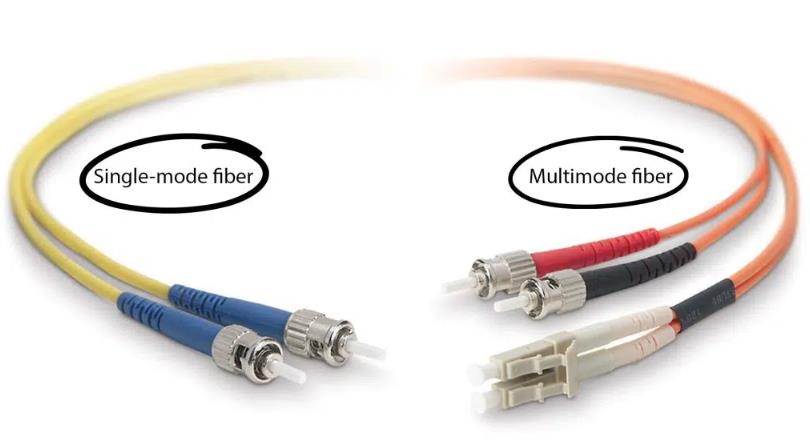Follow-up and multi-mode common questions,Fiber optic cables and jumpers are critical components in modern communication infrastructure, providing high-speed and reliable data transmission over long distances. In this article, we will explore some common questions about single-mode and multi-mode fibers and discuss their uses in fiber optic networks.

What is Single-mode Fiber?
Single-mode fiber (SMF) is a type of optical fiber that is designed to transmit a single mode of light, which results in a highly focused beam of light and minimal signal loss. The core of an SMF typically measures 8-10 microns in diameter, and it is surrounded by a cladding layer that has a lower refractive index than the core. The cladding layer helps to keep the light within the core and minimize signal loss.
Single-mode fibers are commonly used in long-distance communication applications, such as telecommunications, data centers, and cable television systems. SMF is capable of transmitting data over distances of up to 100 kilometers without requiring signal regeneration. However, SMF is more expensive than multimode fiber (MMF) and requires more precise alignment when connecting components.
What is Multimode Fiber?
Multimode fiber (MMF) is a type of optical fiber that is designed to transmit multiple modes of light, which results in a broader beam of light and more signal loss. The core of an MMF typically measures 50-62.5 microns in diameter, and it is surrounded by a cladding layer that has a lower refractive index than the core. MMF is less expensive than SMF and is easier to work with due to its larger core size.
Multimode fibers are commonly used in shorter-distance communication applications, such as local area networks (LANs) and data centers. MMF is capable of transmitting data over distances of up to 550 meters at 10 gigabits per second (Gbps) and up to 300 meters at 40 Gbps. However, MMF is not suitable for long-distance communication due to its higher signal loss and dispersion.
What is Dispersion in Fiber Optic Cables?
Dispersion is the phenomenon of light spreading out as it travels through a fiber optic cable, which can cause signal distortion and reduce the quality of the transmitted data. Dispersion can be divided into two types: chromatic dispersion and modal dispersion.
Chromatic dispersion occurs when different colors of light travel at different speeds through the fiber optic cable, which causes the light to spread out and become distorted. Chromatic dispersion is more pronounced in SMF due to the narrow core size, and it can be minimized through the use of dispersion-shifted fiber or dispersion-compensating fiber.
Modal dispersion occurs when different modes of light travel at different speeds through the fiber optic cable, which causes the light to spread out and become distorted. Modal dispersion is more pronounced in MMF due to the larger core size, and it can be minimized through the use of graded-index fiber or mode-conditioning patch cords.
What is a Mode-Conditioning Patch Cord?
A mode-conditioning patch cord (MCP) is a type of fiber optic jumper that is used to reduce modal dispersion in MMF. MCPs consist of a single-mode fiber that is spliced onto an MMF, and they are typically used in Gigabit Ethernet (GbE) and 10 GbE applications over MMF.
MCPs work by launching the light at an angle into the MMF, which forces it to travel through the core in a single mode. This reduces modal dispersion and improves the quality of the transmitted data. MCPs are only required for certain types of MMF, such as 62.5-micron OM1 and 50-micron OM2 fiber.
04-24
202404-23
202404-23
202404-08
202404-07
202403-26
202403-26
202403-18
202403-18
202403-13
2024
